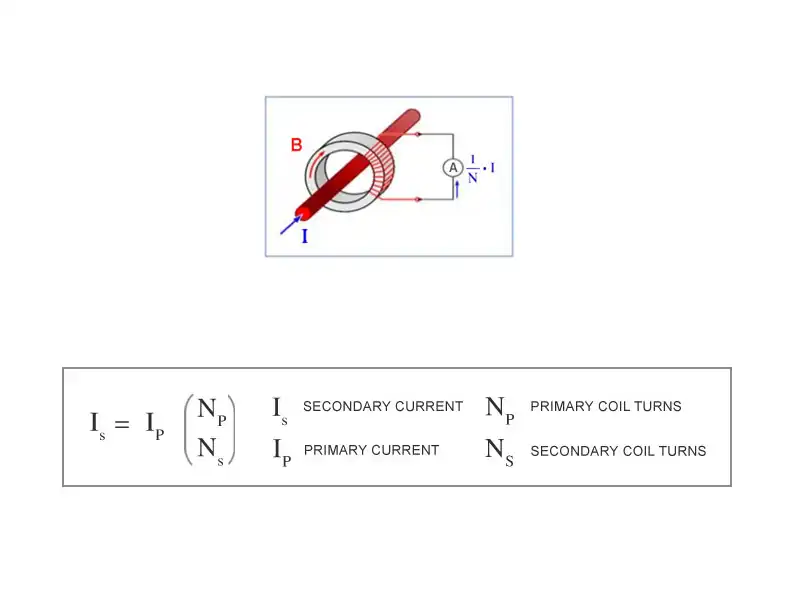Basics of Current Transformers (CT)
Current transformers (CT) are used to monitor electrical current or convert high primary current into a reduced, standardized secondary current suitable for use in meters, relays, control equipment, and other instruments. CT that convert current also isolate the high-voltage primary circuit, allow for grounding on the secondary side, and reduce the measured current to a safer value that instruments can handle. To select the right CT for a particular application, it’s essential to understand the key characteristics used to classify current transformers.
Current Ratio
Also known as the turns ratio, the current ratio is the ratio of the primary current to the secondary current. This is proportional to the number of turns in the primary and secondary windings of the transformer. CT typically have a high current ratio. The secondary current is usually rated at 5A, 1A, or 0.1A, while the primary current ratings can range from 10A to over 3000A.
For instance, in a CT with a 100/5 ratio, the primary current is 20 times the secondary current. If 100 amps flow through the primary circuit, it will generate 5 amps on the secondary side. It’s important to note, however, that a 100/5 CT is not the same as a 20/1 CT, even though they have equivalent current ratios. The ratings represent different full-scale input/output current values.

Polarity
The polarity of a CT refers to the direction in which the coil is wound around the core, either clockwise or counterclockwise. All CT have a defined polarity, which is crucial for ensuring correct operation, particularly when connecting CT to power metering and protection relays. Proper polarity alignment is essential to maintain accurate readings and reliable protection.
Accuracy Class
The accuracy class of a current transformer defines its performance characteristics and the maximum load allowed on its secondary circuit. CT are categorized into two main accuracy classes: metering accuracy and relay accuracy (protection CT). Some CT can meet the requirements for both groups.
Metering Accuracy CT: These CT are highly accurate and designed to measure current accurately from very low levels up to the maximum rated current. Due to their precision, metering CT are often used by utility companies for billing purposes.
Relaying Accuracy CT: These CT are less accurate than metering CT but are designed to operate over a broader range of currents, including fault currents. They are typically used in protection systems, where protective relays need to function reliably at various current levels.
In summary, understanding the key aspects of current transformers, including current ratio, polarity, and accuracy class, is essential when selecting and installing CT for metering or protection purposes. Proper selection ensures safe operation, accurate measurements, and effective system protection.



